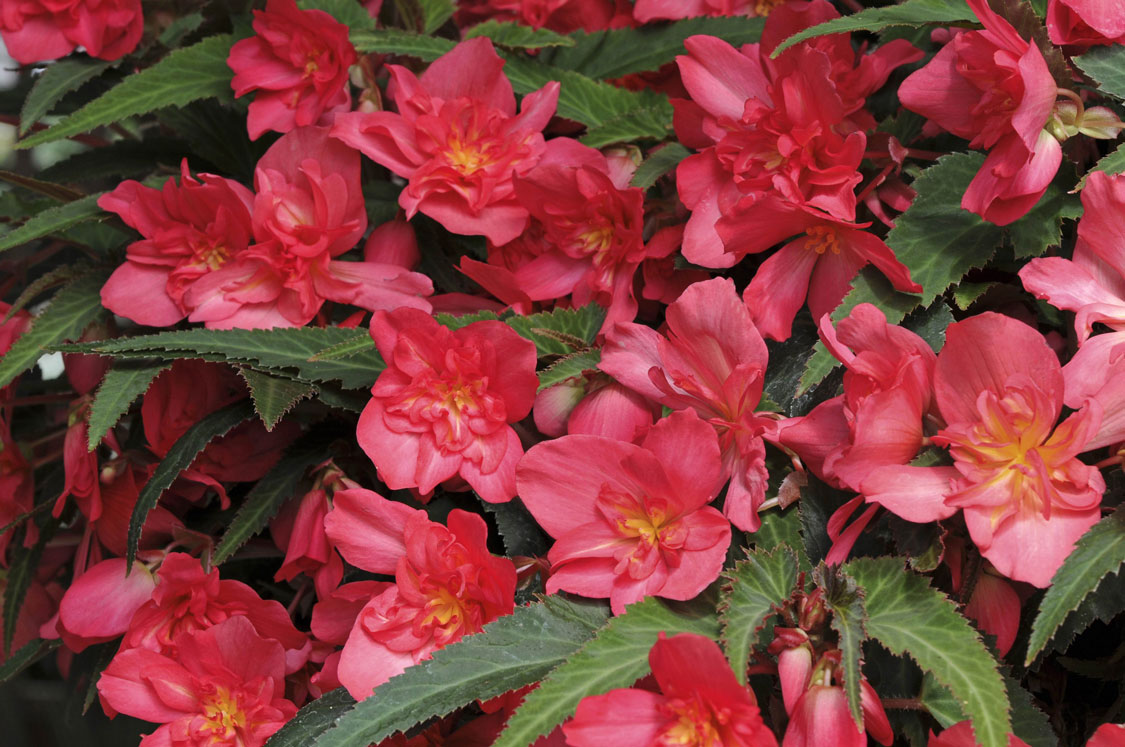Begonias are easy-to-grow plants with stunning flowers and attractive leaves and should be a must in every garden. Here’s all you need to know about growing them
LIKE GROWING BEGONIAS: Growing amaryllis
5 Good reasons to grow them
- Most are evergreen.
- They have a long flowering period.
- They’re low maintenance.
- They’re reliable, quick and easy to grow and generally disease free.
- They make good alternatives and/or companions to impatiens and plectranthus in semi-shaded areas.
READ MORE: Evergreen late-flowering agapanthus
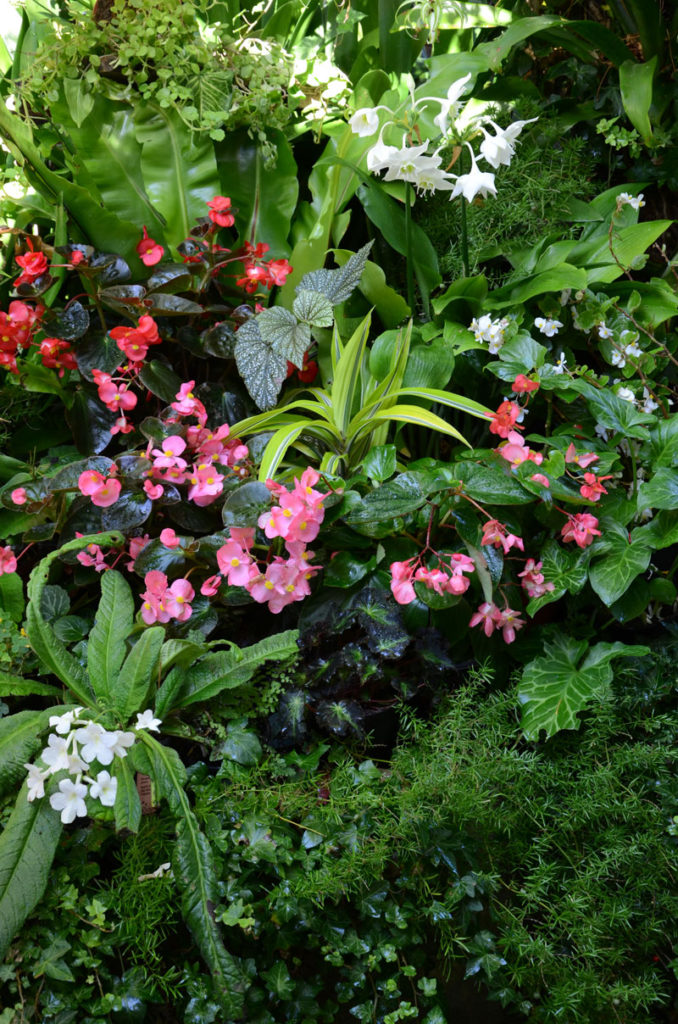
‘Dragon Wing’ begonias growing in pots mix prettily into this raised shady garden
At a glance
- SOIL: Moisture-retaining, well-drained, hummus-rich soil.
- LIGHT: Begonias require bright or dappled shade; some take morning sun. In deep shade they become leggy and less floriferous.
- MOISTURE: Water when needed; don’t overwater. Try not to wet the leaves if they get morning sun as this can burn them.
- FERTILISE: Feed bedding begonias every 4–6 weeks and container-grown plants monthly (or fortnightly with a half-strength dilution). Use a soluble high-potassium feed like Multifeed Flowergro 3:1:6 during summer.
- FROST: They’re frost tender. Grow them as annuals in cold regions or in protected areas.
- PROPAGATION: You can buy mature hybrids from garden centres. Bedding varieties can be grown from seed or bought in six packs; grow tuberous types from tubers. The old familiar rhizomatous species are easy to propagate by division of the rhizomes and from stem or leaf cuttings.
READ MORE: How to Propagate hydrangeas
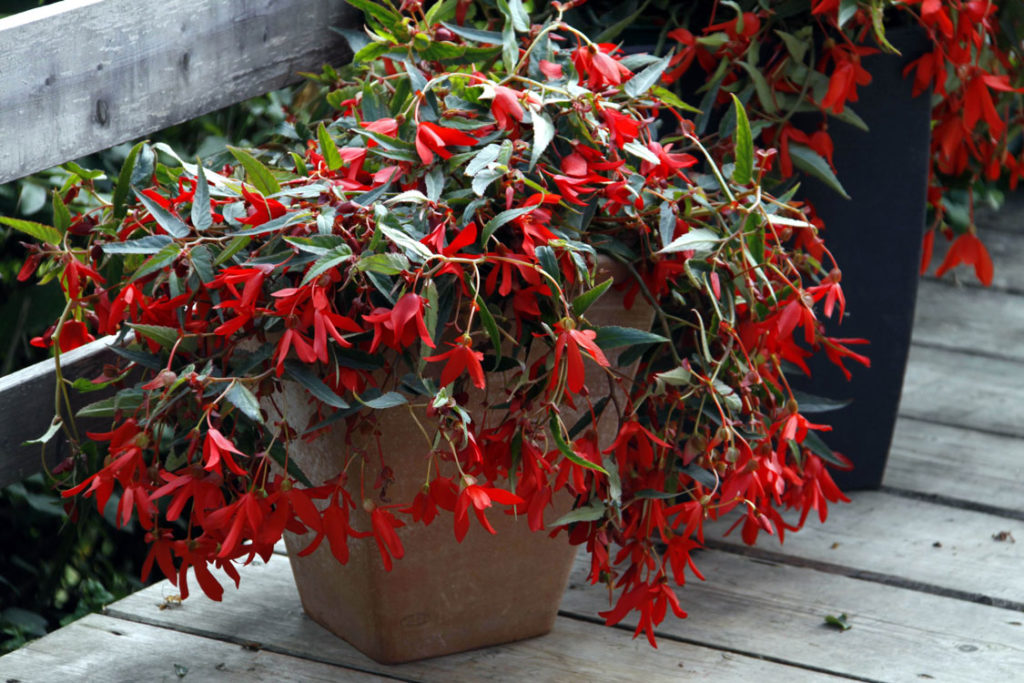
‘Mistral Red’
Many begonias thrive in the garden and on patios, while others make excellent house plants.
In frost-free zones, perennial begonias can go on and on for years and the annuals often act like perennials in (warm) temperate climates, although they’ll die back in cold gardens.
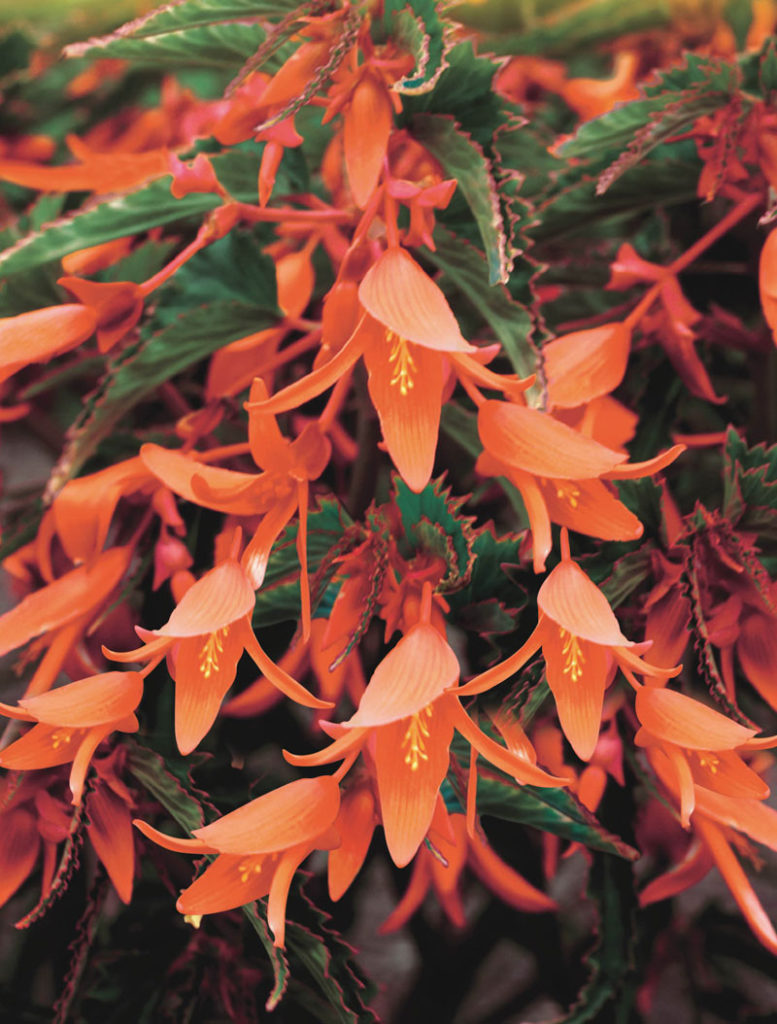
‘Bonfire Orange’
Types of begonias
Cascading
The trailing habit of these begonias makes them ideal for pots, hanging baskets and window boxes.
Make the most of them: Mass plant them in semi-shady beds and borders. Drought and heat tolerant, they’re ideal for Cape gardens, if sheltered from the wind.
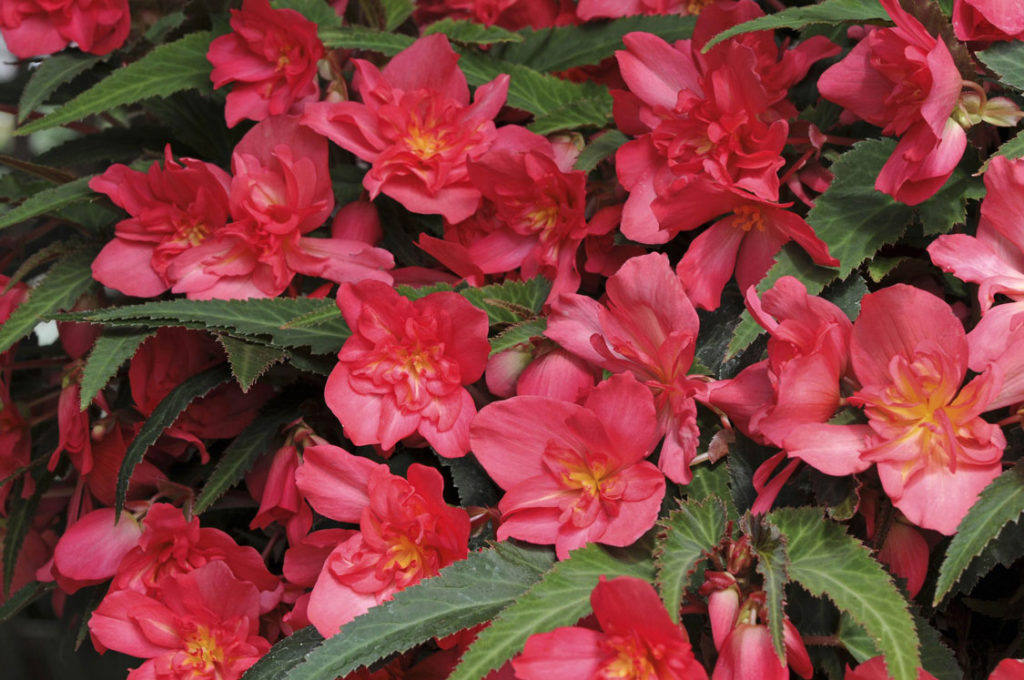
‘Bon Bon Cherry’
Bedding or wax (begonia semperflorens)
These familiar, compact, cushion-like plants grow 20–25cm high and have green or bronze foliage and white, rose pink, red and even bicoloured flowers. They’re aptly named semperflorens, meaning ever-flowering, as they bloom from late spring to the first frosts. Considered by many as perennials, they’re used as annuals in cold gardens.
Make the most of them: Plant en masse for colourful displays, pot up in containers and use them as an edging. Grow them from seed (don’t cover the fine seed) or buy seedlings. They’re a good choice for Cape and Johannesburg gardens.
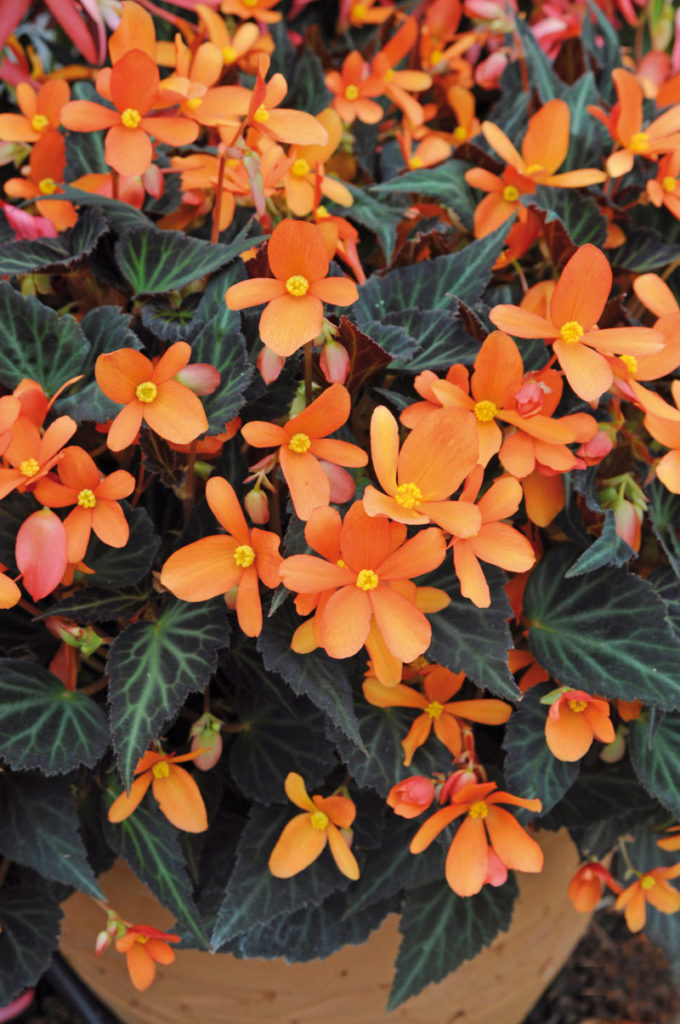
‘Glowing Embers’
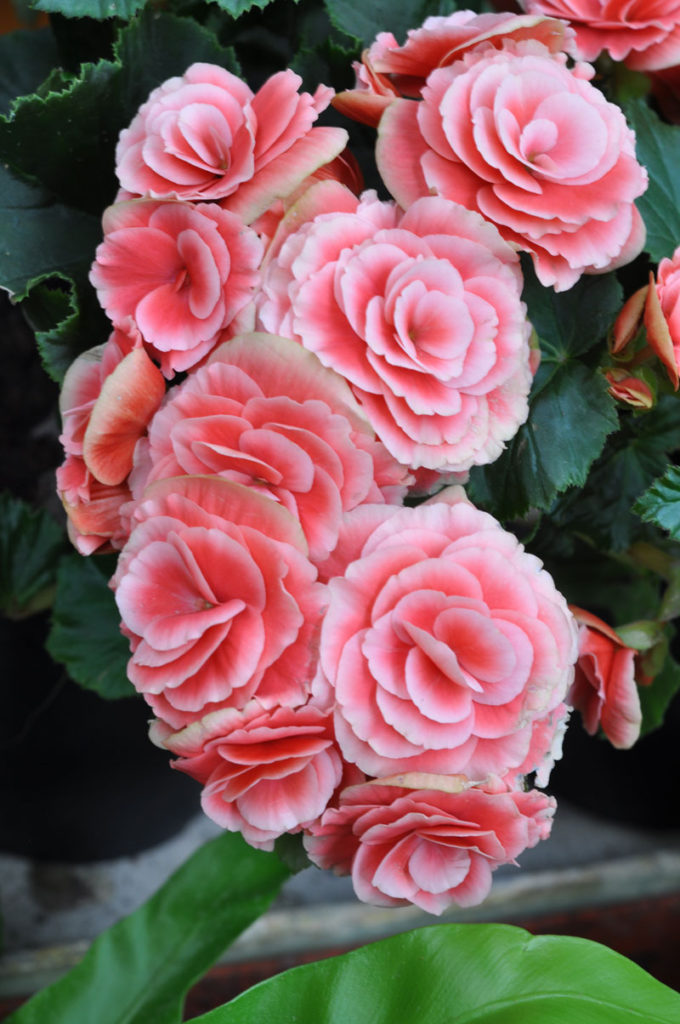
Tuberous begonias
Tuberous
When you want glamorous summer colour on sheltered patios and indoors, nothing beats tuberous-rooted begonias with their clusters of big flamboyant single or double camellia-like flowers.
Buy ready-grown plants or plant the tubers, placing them with their rounded-out (convex) side down on your potting mix; barely cover them with soil. Feed them regularly; don’t overwater them in the growing season, but never let them dry out. They need a winter rest so encourage this by holding back on watering in autumn. Heavy bearers, they may need staking.
Make the most of them: Plant the compact, upright 25–30cm Nonstop series in pots and window boxes and the cascading Illumination series in hanging baskets.

B. coccinea
Evergreen perennials
These free-blooming begonias reward you with flowers for most of the year.
Make the most of them: Plant masses of them as fillers in shady areas. Plant B. coccinea at the back of semi-shaded borders or to give height in corners.
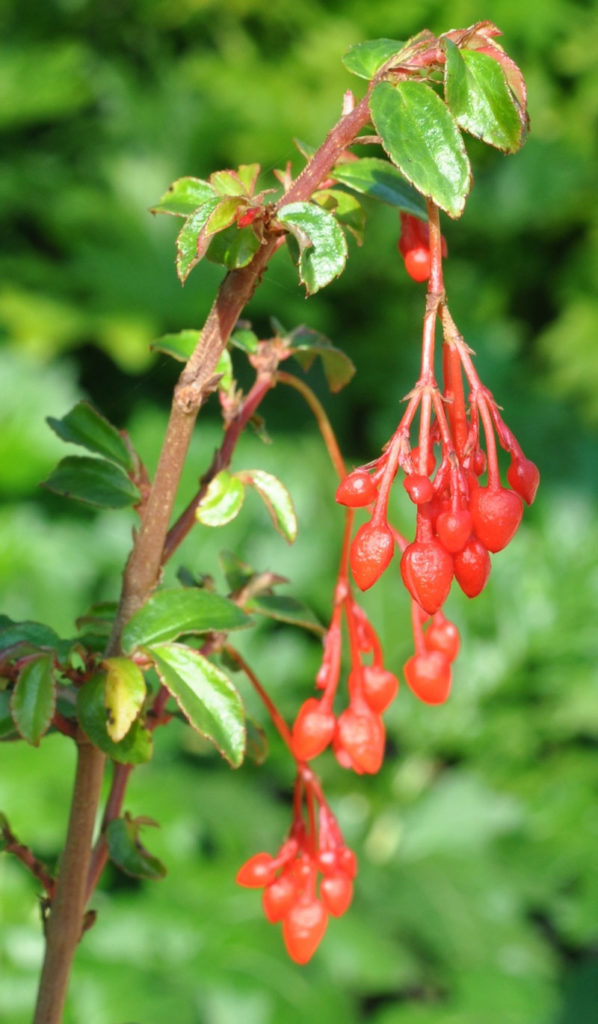
B. corazon-de-jesus
Foliage begonias
Easy-to-grow rhizomatous begonias have beautiful tropical-looking leaves, often with amazing patterns. They thrive outdoors in frost-free areas but are equally at home in containers which can be moved into shelter in winter. Many have eye-catching flower spikes. Grow them from leaf cuttings or by dividing the rhizomes.
Make the most of them: They’re perfect for containers and as indoor pot plants.
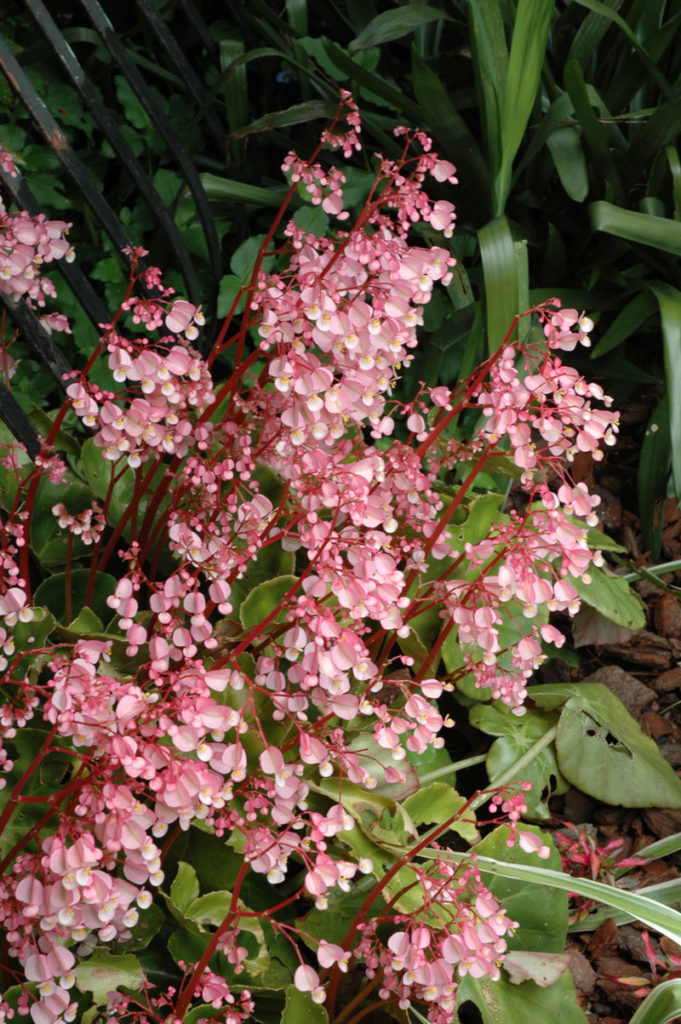
B. manicata
More from Ball Straathof: ballstraathof.co.za

